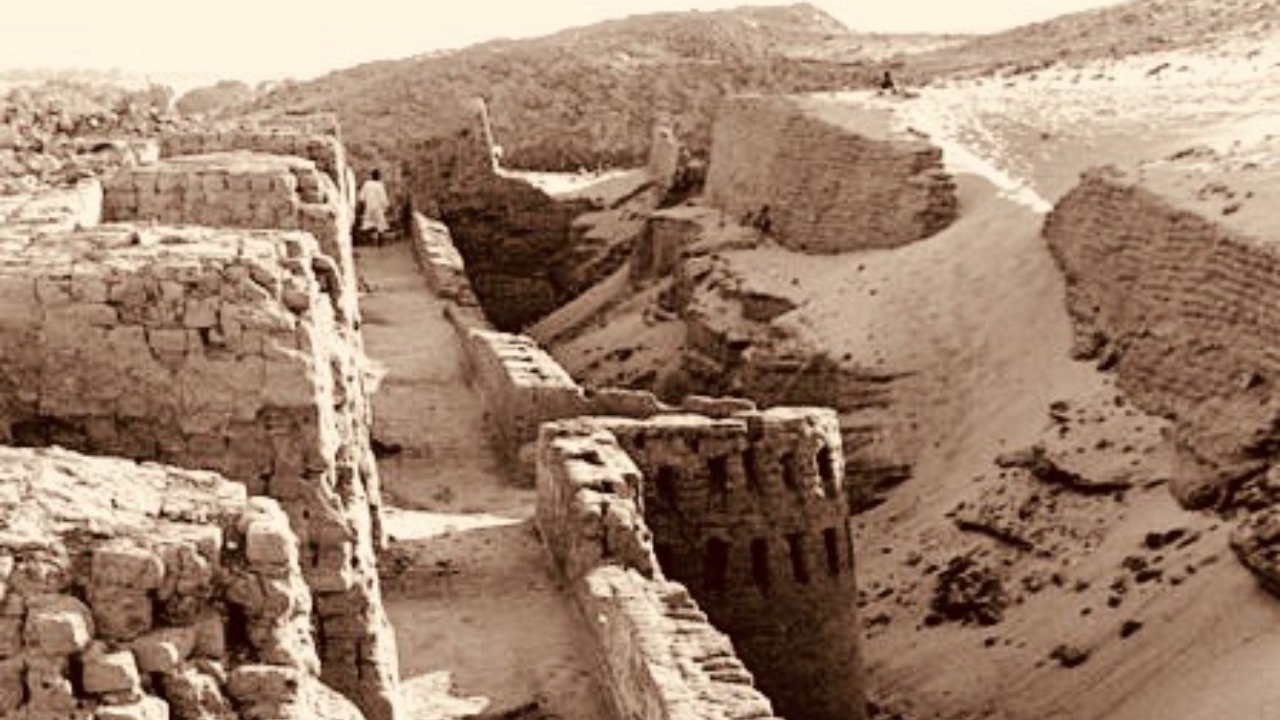
In a significant archaeological breakthrough, a colossal 3,500-year-old Egyptian military fortress has been unearthed at Tell el-Kharouba in the Sinai Desert. Located near the Gaza border and along the Ancient Horus Military Road, this fortress was a critical stronghold during the New Kingdom period. The discovery sheds new light on Egypt’s strategic fortifications and their role in safeguarding trade routes and warding off invasions.
Site Location and Geography
The fortress’s strategic location at Tell el-Kharouba in the Sinai Desert, near the Gaza border, underscores its role as a frontier point. This proximity to the border would have allowed the ancient Egyptians to monitor and control movements in and out of their territory, thereby maintaining a strong defensive line against potential threats. The fortress’s placement along the Ancient Horus Military Road further highlights its importance, as this route was a vital artery for trade between Egypt and the Levant.
The harsh environmental conditions of the Sinai Desert would have influenced the fortress’s design and purpose. The fortress would have needed to withstand extreme temperatures and sandstorms, while also providing a secure base for military operations and trade activities.
Historical Period and Dating
The fortress dates back to the New Kingdom era, approximately 3,500 years ago. This period is known for its military expansions into the Sinai region, and the fortress’s age aligns with this broader historical context. The Ancient Horus Military Road, along which the fortress is located, was in active use during this period for both military and commercial activities.
The fortress’s construction and its strategic location along this ancient trade route provide a tangible link to Egypt’s past, offering insights into the military strategies and trade networks of the New Kingdom era.
Fortress Structure and Scale
The fortress’s massive size indicates its role as a major defensive installation. Its architectural elements, such as walls and enclosures, were likely adapted to the challenging Sinai terrain. The fortress’s integration with the surrounding landscape would have facilitated surveillance and control over trade paths, further underscoring its strategic importance.
While the full extent of the fortress’s scale is still being uncovered, initial findings suggest that it was a significant structure within the ancient Egyptian military architecture.
Military and Strategic Importance
The fortress served as an Egyptian military outpost, guarding against threats from the east. Its position near the Gaza border would have made it a crucial buffer zone during New Kingdom campaigns. Furthermore, its location on the Ancient Horus Military Road would have facilitated troop movements and supply lines, reinforcing its strategic importance.
The fortress’s role in protecting trade routes also underscores its economic significance. By controlling this key trade artery, the ancient Egyptians could ensure the safe passage of goods and maintain economic stability.
Archaeological Discovery Process
The recent excavation efforts at Tell el-Kharouba led to the discovery of the fortress. Initial findings from surveys in the Sinai Desert confirmed the site’s military nature. The discovery process involved collaborative work among archaeologists focusing on New Kingdom artifacts in the region.
The uncovering of the fortress is a testament to the meticulous work of these archaeologists, who have brought to light a significant piece of ancient Egyptian history.
Implications for Ancient Egyptian History
The discovery of the 3,500-year-old fortress enhances our understanding of New Kingdom defensive strategies. It provides tangible evidence of the scale and sophistication of Egypt’s military architecture during this period. The fortress’s strategic location along the Ancient Horus Military Road also contributes to our knowledge of trade networks during the New Kingdom era.
Furthermore, the fortress’s proximity to the Gaza border offers fresh insights into Egypt’s interactions with neighboring regions. This discovery, therefore, has far-reaching implications for our interpretation of ancient Egyptian history and its broader geopolitical context.
More from MorningOverview